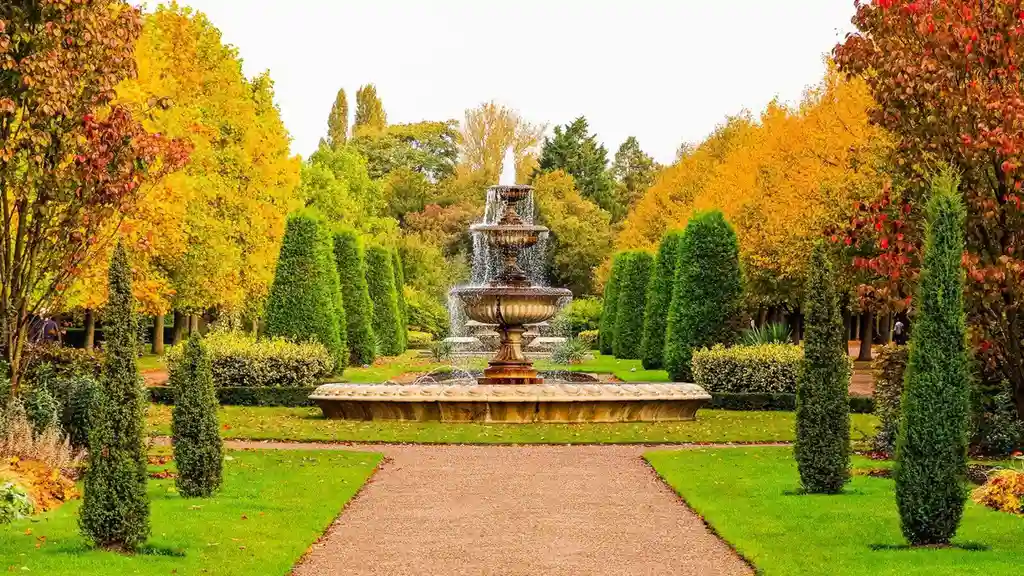Exploring British Architecture: From Gothic to Modern
Sample meta description.

A Journey Through Time: British Architectural Styles - History and Evolution
Alright, buckle up, architecture buffs! We're about to embark on a whirlwind tour of British architecture, from the soaring heights of Gothic cathedrals to the sleek lines of modern masterpieces. Forget dry textbooks; we're talking a fun, engaging exploration of how Britain's buildings reflect its rich history and cultural shifts. Think of it as a time-traveling adventure, but with bricks and mortar instead of a DeLorean.
We'll start way back when… well, not quite the dinosaurs, but close enough! The Romans left their mark, sure, but it's the medieval period where things really start to get interesting. Picture imposing castles, fortified walls, and, of course, those magnificent Gothic cathedrals. Think pointed arches, ribbed vaults, and stained-glass windows that tell stories in light and color. These weren't just buildings; they were statements of power, faith, and ingenuity. We'll delve into the key characteristics of Gothic architecture and explore some of its most iconic examples, like York Minster and Canterbury Cathedral. Seriously, have you seen those places? Mind-blowing!
Then, we'll fast forward to the Tudor and Elizabethan eras, a time of prosperity and artistic flourishing. This period saw the rise of grand country houses, characterized by symmetrical facades, large windows, and ornate detailing. Think of places like Hardwick Hall, a true testament to the ambition and wealth of its owner, Bess of Hardwick. We'll explore the influences that shaped this style, from Renaissance ideas to local building traditions.
Next up, the Baroque period, a time of drama and exuberance. Think of grand palaces, sweeping staircases, and opulent interiors. Blenheim Palace, the birthplace of Winston Churchill, is a prime example of this style. We'll discuss the key features of Baroque architecture and its impact on British cities.
And of course, we can't forget the Georgian and Regency periods, a time of elegance and refinement. Think of symmetrical townhouses, classical facades, and elegant interiors. Bath is a treasure trove of Georgian architecture, with its iconic Royal Crescent and Circus. We'll explore the influences that shaped this style, from classical ideals to the rise of the middle class.
Finally, we'll arrive in the modern era, a time of experimentation and innovation. Think of skyscrapers, glass and steel structures, and sustainable designs. The Shard in London is a prime example of modern architecture. We'll discuss the key features of modern architecture and its impact on British cities.
Gothic Grandeur: Exploring Key Features and Examples of British Gothic Architecture
Let's zoom in on Gothic architecture for a moment, because it's just so darn impressive. We're talking about those towering cathedrals that seem to reach for the heavens. What makes them so special? Well, a few key features stand out:
- Pointed Arches: Unlike rounded arches, pointed arches distribute weight more efficiently, allowing for taller and more slender structures.
- Ribbed Vaults: These intricate systems of intersecting arches provide support and add visual interest to ceilings.
- Flying Buttresses: These exterior supports transfer weight away from the walls, allowing for larger windows and more open spaces.
- Stained Glass Windows: These colorful windows depict biblical scenes and add a sense of awe and wonder to the interior.
Some must-see examples of British Gothic architecture include:
- York Minster: One of the largest Gothic cathedrals in Northern Europe, York Minster is renowned for its stunning stained-glass windows and impressive scale.
- Canterbury Cathedral: The mother church of the Church of England, Canterbury Cathedral is a masterpiece of Gothic architecture and a UNESCO World Heritage Site.
- Westminster Abbey: A historic church in London, Westminster Abbey has been the site of coronations and royal weddings for centuries.
Modern Marvels: A Look at Contemporary British Architectural Design - Sustainable Architecture and Urban Planning
Now, let's jump forward to the present day and explore the cutting edge of British architecture. Modern British architecture is all about innovation, sustainability, and pushing the boundaries of design. Think of buildings that not only look amazing but also minimize their environmental impact and enhance the quality of life for their occupants.
Key trends in modern British architecture include:
- Sustainable Design: Using eco-friendly materials, energy-efficient systems, and passive design strategies to reduce the environmental impact of buildings.
- Urban Regeneration: Revitalizing neglected urban areas through innovative architectural designs and public spaces.
- Mixed-Use Developments: Creating vibrant communities by combining residential, commercial, and cultural spaces in a single development.
- Technological Integration: Incorporating smart home technology, building automation systems, and digital fabrication techniques into architectural designs.
Some notable examples of modern British architecture include:
- The Shard: A towering skyscraper in London, the Shard is a symbol of modern British architecture and a landmark on the London skyline.
- The Eden Project: A botanical garden in Cornwall, the Eden Project features two massive biomes that house a diverse range of plant species from around the world.
- The Sage Gateshead: A performing arts center in Newcastle, the Sage Gateshead is renowned for its striking design and world-class acoustics.
Beyond the Bricks: Architectural Products and Their Applications - Material Selection and Building Technology
Okay, let's get practical for a minute. Architecture isn't just about grand designs; it's also about the materials and products that bring those designs to life. Choosing the right materials and technologies is crucial for creating buildings that are not only beautiful but also durable, sustainable, and functional. Let's talk about some specific products and how they're used in British architecture.
Product Spotlight: Smart Glass - Energy Efficiency and Privacy Solutions
What is it? Smart glass, also known as switchable glass, is a type of glass that can change its transparency on demand. It can be used to control the amount of light and heat that enters a building, as well as provide privacy.
How it's used: Smart glass is used in a variety of applications, including windows, doors, partitions, and skylights. It's particularly popular in modern office buildings and residential homes where energy efficiency and privacy are important.
Example: Imagine a large glass facade on a modern office building. During the summer, the smart glass can be switched to a darker tint to reduce solar heat gain and lower cooling costs. In the winter, the glass can be switched to a clearer tint to allow more sunlight to enter the building and reduce heating costs. At the same time, the glass can be switched to opaque for meetings or privacy.
Product Comparison:
- SageGlass: A leading manufacturer of electrochromic glass, SageGlass offers a wide range of smart glass products for commercial and residential applications. It's known for its high performance, durability, and aesthetic appeal. Price range: $80 - $150 per square foot.
- View Dynamic Glass: Another leading manufacturer of electrochromic glass, View Dynamic Glass offers a similar range of products to SageGlass. It's known for its energy efficiency and ability to improve occupant comfort. Price range: $75 - $140 per square foot.
- Polytronix: Offers liquid crystal smart glass, providing instant on/off switching. Suitable for privacy applications and projection screens. Price range: $60 - $120 per square foot.
Product Spotlight: Cross-Laminated Timber (CLT) - Sustainable Construction and Structural Strength
What is it? Cross-laminated timber (CLT) is a type of engineered wood product made by gluing together layers of solid-sawn lumber, each oriented perpendicular to adjacent layers. This creates a strong, stable, and lightweight material that can be used for walls, floors, and roofs.
How it's used: CLT is increasingly being used in sustainable construction projects as a replacement for concrete and steel. It's particularly popular for mid-rise and high-rise buildings, as well as schools, hospitals, and other public buildings.
Example: Imagine a multi-story apartment building constructed entirely from CLT. The CLT panels provide structural support, insulation, and fire resistance. The building is not only environmentally friendly but also aesthetically pleasing, with exposed wood surfaces that create a warm and inviting atmosphere.
Product Comparison:
- KLH: A leading manufacturer of CLT panels, KLH offers a wide range of products for various applications. It's known for its high quality, precision, and sustainable sourcing. Price range: $50 - $80 per cubic foot.
- Stora Enso: Another leading manufacturer of CLT panels, Stora Enso offers a similar range of products to KLH. It's known for its innovation and commitment to sustainability. Price range: $45 - $75 per cubic foot.
- Mayr-Melnhof Holz: Specializes in customized CLT solutions, offering a wide range of dimensions and surface finishes. Price range: $55 - $85 per cubic foot.
Product Spotlight: Modular Building Systems - Efficiency and Cost-Effectiveness
What is it? Modular building systems involve constructing buildings off-site in controlled factory environments and then transporting them to the final location for assembly. This method offers significant advantages in terms of speed, cost, and quality control.
How it's used: Modular construction is used for a wide range of building types, including residential, commercial, and institutional buildings. It's particularly well-suited for projects that require rapid construction timelines or have limited site access.
Example: Imagine a new school building constructed using modular building systems. The classrooms, offices, and other facilities are manufactured in a factory while the foundation is being prepared on-site. Once the modules are complete, they are transported to the site and assembled in a matter of days or weeks. This significantly reduces construction time and minimizes disruption to the surrounding community.
Product Comparison:
- Ilke Homes: A UK-based modular home manufacturer, Ilke Homes offers a range of customizable modular homes that are designed to be energy-efficient and sustainable. Price range: £1,200 - £1,800 per square meter.
- Lendlease: A global construction company, Lendlease offers modular building solutions for a variety of building types, including residential, commercial, and institutional buildings. Price range: Varies significantly depending on project scope.
- TopHat: Focuses on high-quality, architecturally designed modular homes, emphasizing sustainability and modern design. Price range: £1,500 - £2,200 per square meter.
:max_bytes(150000):strip_icc()/277019-baked-pork-chops-with-cream-of-mushroom-soup-DDMFS-beauty-4x3-BG-7505-5762b731cf30447d9cbbbbbf387beafa.jpg)






